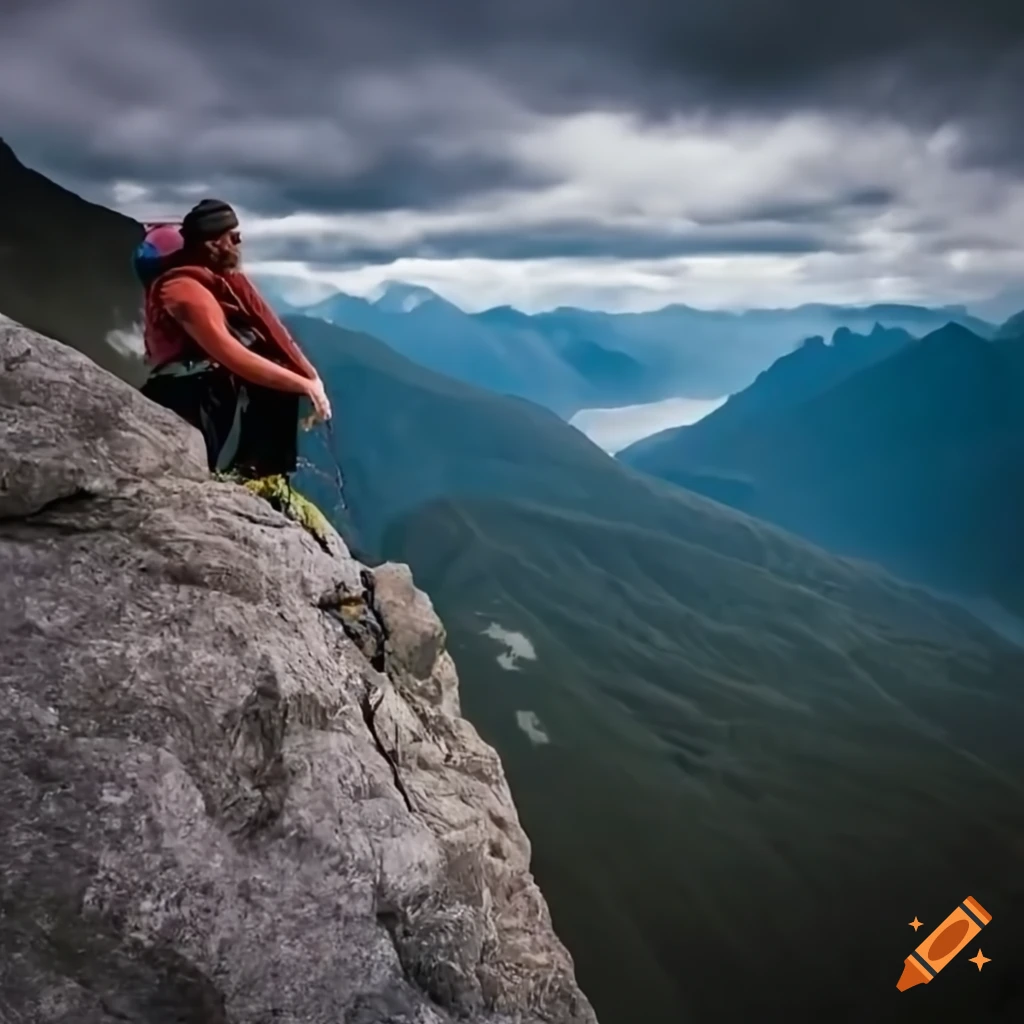Introduction to Adventure Tourism
Adventure tourism is a rapidly expanding segment of the global travel industry, characterized by a focus on physical activity, exploration, and immersive engagement with the natural environment. Unlike traditional tourism, which often revolves around relaxation and sightseeing, adventure tourism is designed to offer travelers unique and exhilarating experiences that challenge their physical and mental boundaries. This type of tourism typically involves activities such as hiking, climbing, rafting, and wildlife safaris, all of which require a significant degree of physical exertion and a spirit of adventure.
The concept of adventure tourism is not entirely new; its roots can be traced back to early human exploration and the inherent desire to discover uncharted territories. However, it has evolved significantly over the past few decades, transforming from a niche market into a mainstream travel option. This evolution has been driven by various factors, including increased accessibility to remote destinations, advances in outdoor equipment and safety gear, and a growing societal emphasis on health and wellness. Modern adventure tourism offers a diverse range of experiences, from soft adventures like nature walks and bird watching to extreme sports such as paragliding and bungee jumping.
The rise in popularity of adventure tourism can also be attributed to a shift in consumer preferences. Today’s travelers are increasingly seeking authentic and transformative experiences that allow them to connect with nature and push their personal limits. This trend is particularly evident among younger generations, who prioritize experiential travel over material possessions. Additionally, the environmental consciousness associated with adventure tourism often aligns with the values of eco-friendly and sustainable travel, further enhancing its appeal.
As we delve deeper into the facets of adventure tourism, it becomes clear that this dynamic form of travel offers much more than just thrills and excitement. It fosters a profound connection with the natural world, promotes physical fitness, and provides invaluable opportunities for personal growth and cultural exchange. This comprehensive understanding of adventure tourism sets the stage for exploring its various dimensions and the factors contributing to its increasing demand.
Current Market Trends in Adventure Tourism
Adventure tourism has witnessed significant growth in recent years, driven by an increasing demand for unique and immersive travel experiences. Travelers today are seeking more than just conventional sightseeing; they are looking for activities that challenge them and provide a deeper connection to the destinations they visit. This shift towards experiential travel is reshaping the landscape of the tourism industry.
One prominent trend is the growing appeal of eco-friendly and sustainable tourism practices. As environmental awareness rises, more travelers are opting for adventures that minimize their ecological footprint. This trend is evident in the popularity of activities such as hiking, biking, and wildlife safaris, which often emphasize conservation and responsible tourism. Eco-lodges and sustainable tour operators are also gaining traction, catering to the conscientious traveler.
Social media has played a pivotal role in propelling the popularity of adventure travel. Platforms like Instagram and Facebook serve as powerful tools for sharing experiences and inspiring others to seek similar adventures. Stunning visuals and personal stories of adventure tourism create a ripple effect, encouraging more people to explore off-the-beaten-path destinations and engage in adrenaline-pumping activities.
Statistical data underscores the robust growth of the adventure tourism market. According to a report by Allied Market Research, the global adventure tourism market is projected to reach $1,626.7 billion by 2026, growing at a compound annual growth rate (CAGR) of 13.3% from 2019 to 2026. Popular destinations include New Zealand, Costa Rica, and Iceland, known for their diverse landscapes and adventure-friendly environments. Moreover, demographic trends indicate that millennials and Generation Z are the primary drivers of this market, valuing experiences over material possessions.
In conclusion, the adventure tourism industry is evolving to meet the changing preferences of modern travelers. The emphasis on unique, sustainable, and socially shareable experiences is shaping current market trends, making adventure tourism a dynamic and rapidly expanding sector.
Drivers of Demand in Adventure Tourism
The surge in the popularity of adventure tourism can be attributed to several key factors that cater to the evolving desires of modern travelers. One of the primary drivers is the shift in consumer preferences towards more unique and authentic experiences. Unlike traditional tourism, which often focuses on sightseeing and relaxation, adventure tourism offers activities that provide a sense of accomplishment and exploration. Travelers are increasingly seeking ways to engage with nature, challenge themselves, and step outside their comfort zones, all of which adventure tourism readily provides.
Additionally, the growing awareness of health and wellness has significantly contributed to the demand for adventure tourism. Activities such as hiking, mountain biking, and kayaking not only offer thrilling experiences but also promote physical fitness and mental well-being. As people become more health-conscious, the appeal of vacations that combine adventure with fitness continues to rise.
Economic factors also play a crucial role in this trend. Rising disposable incomes and the increased affordability of travel make it easier for individuals to embark on adventure trips. Furthermore, the availability of budget-friendly options and customized packages has made adventure tourism accessible to a broader audience. Consumers are now more willing to invest in experiences that promise unique and memorable moments, rather than material possessions.
Technological advancements have further fueled the growth of adventure tourism. The development of sophisticated outdoor gear and equipment has made adventure activities safer and more enjoyable. Moreover, the advent of online booking platforms has simplified the process of planning and organizing trips. Travelers can now easily research destinations, compare prices, read reviews, and book their adventures with just a few clicks, enhancing the overall appeal of adventure travel.
In essence, the demand for adventure tourism is driven by a complex interplay of changing consumer preferences, health and wellness trends, economic factors, and technological innovations. These elements together create a compelling proposition for those looking to experience the world in a more dynamic and engaging way.
Popular Activities and Destinations
Adventure tourism has seen a significant surge in popularity, with various activities drawing thrill-seekers from across the globe. Among the most sought-after activities are hiking, scuba diving, rock climbing, and wildlife safaris, each offering unique experiences that cater to diverse interests and skill levels.
Hiking remains a quintessential adventure activity, with trails ranging from the serene landscapes of the Appalachian Trail in the United States to the rugged terrains of the Inca Trail in Peru. These trails not only challenge enthusiasts physically but also provide breathtaking views and a closer connection to nature. Additionally, destinations like the Swiss Alps and New Zealand’s Milford Track are renowned for their picturesque scenery and well-maintained paths, making them top choices for hikers.
Scuba diving attracts those eager to explore the underwater world, with sites such as the Great Barrier Reef in Australia and the Blue Hole in Belize ranking high on divers’ lists. These locations offer vibrant marine life and stunning coral formations, creating unforgettable experiences. The Maldives and Thailand also feature prominently in scuba diving itineraries, thanks to their crystal-clear waters and diverse aquatic ecosystems.
Rock climbing enthusiasts find their haven in destinations like Yosemite National Park in the United States and the Dolomites in Italy. These spots offer challenging climbs and spectacular vistas, drawing climbers of all skill levels. Patagonia in Argentina and the cliffs of Krabi in Thailand are also celebrated for their impressive rock formations and climbing opportunities.
Wildlife safaris provide a different kind of adventure, allowing tourists to observe animals in their natural habitats. Africa, with its vast savannas and rich biodiversity, remains the premier destination for safaris. Countries like Kenya, Tanzania, and South Africa offer iconic experiences, such as witnessing the Great Migration or spotting the Big Five. India, with its national parks like Ranthambore and Kaziranga, provides opportunities to see tigers and rhinoceroses in the wild.
The seasonal nature of these activities plays a crucial role in adventure tourism. For instance, the best time for hiking in the Swiss Alps is during the summer months, while scuba diving in the Maldives is ideal from November to April. Understanding the optimal seasons ensures tourists can make the most of their adventures.
Local culture and geography also significantly influence adventure tourism experiences. Engaging with local guides, understanding regional customs, and respecting environmental conservation efforts enrich the adventure and provide deeper insights into the destinations visited. This blend of physical challenge, natural beauty, and cultural immersion makes adventure tourism a compelling choice for many travelers.
The Role of Sustainability in Adventure Tourism
Sustainability has become a cornerstone in the ever-expanding field of adventure tourism. As the industry grows, there is a heightened focus on how adventure tourism can contribute to environmental conservation and foster community development. This shift is driven by an increased consumer demand for eco-friendly travel options, prompting both industry players and tourists to adopt more sustainable practices.
One of the primary ways adventure tourism benefits the environment is through its potential to promote conservation efforts. By operating in natural settings, adventure tourism activities can help raise awareness about the importance of preserving these areas. For instance, responsible trekking companies often collaborate with conservation organizations to maintain trails and protect wildlife habitats. Such initiatives not only safeguard the environment but also enhance the overall travel experience by preserving the natural beauty and biodiversity that attract tourists in the first place.
Community development is another critical aspect where adventure tourism can make a significant impact. By engaging local communities in tourism activities, operators can create job opportunities and stimulate local economies. This symbiotic relationship ensures that the benefits of tourism are felt at the grassroots level, fostering a sense of ownership and responsibility among community members. Successful examples include community-led eco-tourism projects where locals are trained as guides, providing them with a sustainable source of income while enriching the tourist experience with authentic cultural insights.
However, implementing sustainable practices in adventure tourism is not without challenges. Operators often face higher costs associated with eco-friendly initiatives, such as using sustainable materials and adopting renewable energy sources. There is also the challenge of educating both tourists and local communities about the importance and benefits of sustainability. Despite these hurdles, the opportunities are plentiful. By embracing sustainability, adventure tourism operators can differentiate themselves in a competitive market, attract a growing segment of eco-conscious travelers, and contribute positively to the environment and society.
Several case studies highlight the success of sustainable adventure tourism initiatives. For example, in Costa Rica, numerous adventure tourism companies have adopted sustainable practices, from using electric vehicles to supporting local conservation projects. Similarly, in Nepal, trekking companies have implemented waste management programs to keep popular trails clean. These initiatives serve as models for other operators, demonstrating that sustainability and adventure tourism can go hand in hand, ultimately leading to a more responsible and enriching travel experience.
Economic Impact of Adventure Tourism
Adventure tourism has emerged as a significant driver of economic growth in many regions around the globe. This sector’s contributions to local economies can be observed through several key areas, including job creation, infrastructure development, and the support of local businesses. By attracting tourists seeking unique and adrenaline-fueled experiences, adventure tourism stimulates diverse economic activities and generates substantial revenue streams.
One of the most immediate economic benefits of adventure tourism is job creation. Local communities often see a rise in employment opportunities, ranging from tour guides and hospitality staff to equipment rental operators and transportation providers. These jobs are not limited to seasonal work; many positions offer year-round employment, which contributes to the economic stability of the area.
Infrastructure development is another critical impact of adventure tourism. As destinations become popular, there is an increased need for better roads, airports, and other transportation facilities, as well as enhanced communication networks and healthcare services. These improvements not only benefit tourists but also enhance the quality of life for local residents, fostering a more robust and sustainable economy.
Local businesses also enjoy significant advantages from the influx of adventure tourists. Restaurants, hotels, shops, and other service providers experience increased demand, leading to higher sales and profits. This growth often inspires entrepreneurial ventures, encouraging innovation and diversifying the local economy. Additionally, the promotion of local culture and products helps to preserve heritage and traditions while presenting new business opportunities.
On a broader scale, adventure tourism contributes to increased international travel and foreign exchange earnings. Tourists from various parts of the world bring foreign currency, which bolsters national economies and can reduce trade deficits. The global exposure of adventure destinations also attracts further investments, fostering economic development and cooperation between countries.
However, the rapid growth of adventure tourism is not without challenges. Over-dependence on tourism can make economies vulnerable to external shocks, such as economic downturns or natural disasters. Sustainable practices and careful planning are essential to mitigate these risks and ensure long-term benefits for local communities.
Challenges Facing the Adventure Tourism Industry
The adventure tourism industry, while dynamic and rapidly growing, faces a multitude of challenges that require careful navigation. One of the primary concerns is safety and risk management. Adventure tourism involves inherently risky activities such as mountaineering, white-water rafting, and bungee jumping. Ensuring the safety of participants necessitates stringent safety protocols, well-trained personnel, and comprehensive risk assessments. Neglect in this area can lead to accidents, thereby tarnishing the reputation of operators and the industry as a whole.
Environmental degradation is another significant issue. Popular adventure tourism locations often experience heavy footfall, which can lead to the erosion of natural landscapes, pollution, and disruption of local ecosystems. Effective environmental management practices are essential to mitigate these impacts. This includes promoting responsible tourism behaviors, implementing waste management systems, and supporting conservation efforts to preserve the natural beauty and biodiversity that attract tourists in the first place.
Regulatory issues also pose a challenge. The adventure tourism industry is subject to a complex web of local, national, and international regulations. These can vary widely and may include requirements for permits, adherence to safety standards, and environmental protections. Navigating these regulations requires operators to stay informed and compliant, which can be resource-intensive, particularly for smaller businesses.
The impact of global events such as pandemics and climate change cannot be overstated. The COVID-19 pandemic, for instance, led to a dramatic decline in tourism activities worldwide, impacting revenues and operations. Similarly, the effects of climate change, such as unpredictable weather patterns and natural disasters, can disrupt adventure tourism activities and even render some locations unsafe or inaccessible.
To address these challenges, industry standards and certifications play a crucial role. Certifications like ISO 21101 for adventure tourism safety management systems help ensure that operators adhere to best practices. These standards not only enhance safety and quality but also build consumer trust, which is essential for the sustained growth of the adventure tourism industry. By adhering to such standards, operators can provide a high-quality, safe, and sustainable adventure tourism experience, thereby fostering long-term success and resilience in the face of challenges.
Conclusion and FAQs
In conclusion, the demand for adventure tourism has seen a significant rise, driven by the increasing desire for unique and exhilarating experiences. This trend is reshaping the tourism industry, prompting service providers to offer more diverse activities that cater to the adventurous spirit. The implications are profound, as destinations around the globe are adapting to meet the expectations of thrill-seekers, thereby boosting local economies and promoting sustainable tourism practices.
The growing interest in adventure tourism reflects broader societal shifts towards health consciousness, environmental awareness, and a pursuit of meaningful, immersive travel experiences. As more individuals seek to challenge themselves and explore the world’s natural wonders, the industry must continue to innovate and prioritize safety and environmental stewardship.
FAQs
How do I get started with adventure tourism?
To embark on an adventure tourism journey, start by identifying your interests and fitness level. Research destinations and activities that align with your preferences, whether it’s hiking, diving, or mountain biking. Consulting with experienced travel agents or adventure tour operators can also provide valuable insights and help you plan a memorable trip.
What should I consider when planning an adventure trip?
When planning an adventure trip, consider factors such as the difficulty level of the activities, the climate and terrain of the destination, and your physical preparedness. It’s crucial to ensure that you have the appropriate gear and equipment, as well as a clear understanding of the itinerary. Additionally, familiarize yourself with local customs and regulations to respect the environment and communities you will encounter.
How can I ensure a safe and enjoyable adventure experience?
Safety should always be a priority in adventure tourism. Choose reputable tour operators with experienced guides, and ensure you have adequate travel insurance that covers adventure activities. Stay informed about potential risks and emergency procedures. It’s also wise to undergo a medical check-up before engaging in strenuous activities, stay hydrated, and pace yourself to avoid exhaustion. Lastly, respect nature and wildlife, leaving no trace to preserve the beauty of the destinations for future adventurers.
By considering these factors and taking the necessary precautions, you can fully immerse yourself in the world of adventure tourism and create unforgettable memories.


